The best Nikon camera for professional photography is no longer solely a DSLR. Ever since the mirrorless Z system debuted in 2018, professional photographers have the option of both full-frame DSLRs, like the D6, and high-end mirrorless models like the Z7 II and the flagship Z9.
The best Nikon cameras are robust and built for speed. And they haven’t always been full-frame. In the past, some of the best APS-C cameras you could buy were made by Nikon, such as the powerful D500.
But today Nikon is looking to set a new market standard as the go-to system for professionals with its new Z9. The Z9, with its 8K video capability and eschewing of a mechanical shutter, screams the future. And though we’re all still waiting for its wider release, it should firmly sit at the top of all best professional cameras lists, as well as being the best Nikon camera for professional photography.
But it also likely costs more than your car. And it’s not the only option for jobbing professionals. Nikon has a number of cameras in its range tailored for different professional needs.
The best Nikon cameras for professional photography you can buy today
Below are our picks for the best professional Nikon cameras from the company’s current range. All of our picks are based on our experience testing these cameras, and we’ve broken them down by genre to help you choose the best option for you.
For more information on professional cameras across all brands, have a look at some of our other guides below. And for a deeper dive into the many different camera types and features available, check out our range of camera buying guides.
Nikon Z9
Specification
- Camera type: Full-frame mirrorless camera
- Announced: 28th October 2021
- Lens mount: Nikon Z
- Sensor: Full-frame (FX 35.9 x 23.9mm) 45.7MP stacked backside illuminated (BSI) sensor
- Processing engine: Expeed 7
- Stabilisation: 5-axis sensor shift giving 6EV shutter speed compensation
- Sensitivity: ISO 64-25,600, expandable to ISO 32-102,400
- Maximum continuous shooting rate: 20fps for up to 1000+ raw (high efficiency) files or 685 raw (high efficiency *) files, 30fps for up to 1000+ normal-quality Jpegs, or 120fps normal-quality 11Mp Jpegs
- Autofocus system: Hybrid with phase and contrast detection
- Phase detection points: 493
- AF-area modes: Pinpoint (available in photo mode only), single-point, dynamic-area (S, M, and L; available in photo mode only), wide-area (S and L), and auto-area AF, 3D-tracking (available in photo mode only), subject-tracking AF (available in video mode only)
- Video resolution: 8K (7680 x 4320): 30p (progressive)/25p/24p, 4K (3840 x 2160): 120p/100p/60p/50p/30p/25p/24p, Full HD (1920 x 1080): 120p/100p/60p/50p/30p/25p/24p
- Video file format: MOV, MP4
- Video compression: Apple ProRes 422 HQ (10 bit), H.265/HEVC (8 bit/10 bit), H.264/AVC (8 bit)
- Viewfinder: 0.5-inch 3.69-million-dot, 3,000-nit OLED viewfinder
- Screen: 3.2-inch 2,100,000-dot 4-way-tilting touch-screen
- Storage: Dual XQD/CFexpress
- Dimensions (W x H x D): 149 x 149.5 x 90.5 mm / 5.9 x 5.9 x 3.6 inches
- Weight: 1340 g / 2 lb. 15.3 oz.with battery and memory card but without body cap and accessory shoe cover, Body only: 1160g / 2 lb. 9 oz.
The Nikon Z9 offers just about everything professional and enthusiast photographers might want from a camera. It’s big and heavy for a mirrorless camera, but it’s also twin-gripped, weather-sealed and a bit lighter than the Nikon D6.
Its 45.7Mp sensor is excellent and able to capture a high level of detail without over-stretching the camera’s noise control.
There’s also 20fps full-resolution shooting for raw files, 30fps for Jpegs and 120fps shooting at 11Mp, paired with what looks like an excellent AF system with super-sticky Eye-detection.
The Nikon Z9 goes beyond what’s offered by the Nikon D6 while at £5,299/€6,299 it costs around £1,000 less and offers stiff competition to the Sony A1 and Canon EOS R3.
We’re still waiting for its wider release, but we’ve spent some time shooting with it and it really is the camera you’ve been waiting for.
£5299
€6299For
- New 45.7Mp full-frame sensor sensor
- Advanced AF system
- Durable, weatherproof build
Nikon D6
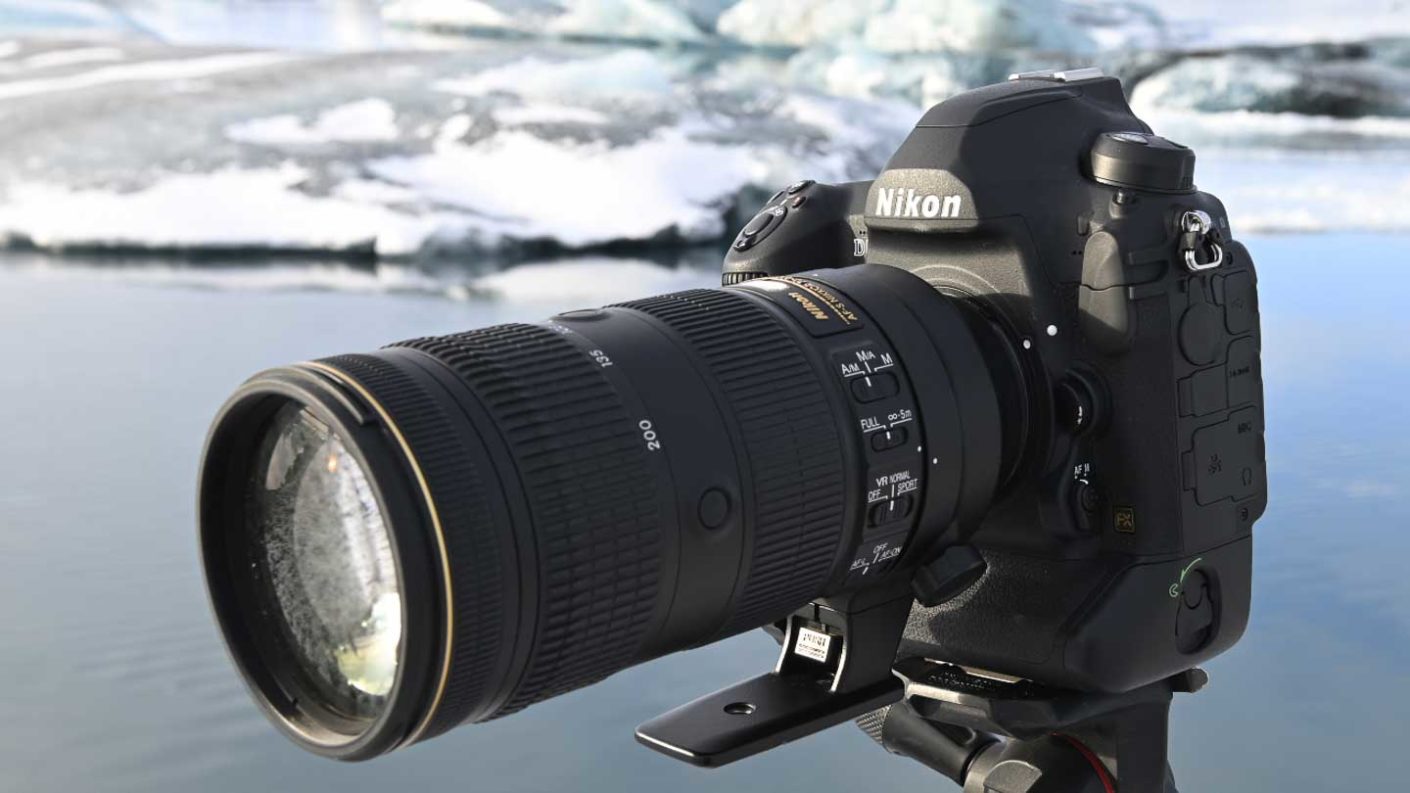
Specification
- Camera type: DSLR
- Announced: 12th February 2020
- Sensor: 20.8Mp full-frame (35.9 x 23.9mm) CMOS
- Lens mount: Nikon F
- Processing engine: Expeed 6
- Viewfinder: Eye-level pentaprism with 100% coverage, 0.72x magnification (with 50 mm f/1.4 lens at infinity, -1.0 m-¹), 17mm eye-point and -3 to +1 m-¹ diopter adjustment
- Screen: Fixed 3.2–inch 2359k-dot TFT touch-sensitive LCD
- Sensitivity: ISO 100 to 102,400, expandable to ISO 50-3,280,000
- Continuous shooting: Up to 14 fps, Continuous Low: 1 to 10 fps, Continuous High: 10 to 14 fps, Quiet: 1 to 5 fps
- Shutter speed: 1/8000 to 30sec, Bulb; Time; X250
- Autofocus system: Viewfinder: TTL phase-detection with 105 focus points, all cross-type, 15 at f/8, Live view: Contrast-detect AF, focus point selected by camera when face detection or subject-tracking is used.
- AF-area mode: Viewfinder: Single-point AF; 9-, 25-, 49-, or 105- point dynamic-area AF; 3D-tracking; group-area AF; group-area AF (C1); group-area AF (C2); auto-area AF, Live view: Face-detection AF, wide-area AF, normal-area AF, subject-tracking AF
- Video resolutions: 3840 x 2160 (4K UHD); 30p (progressive), 25p, 24p, 1920 x 1080; 60p, 50p, 30p, 25p, 24p, 1280 x 720: 60p, 50p, 1920 x 1080 crop: 60p, 50p, 30p, 25p, 24p¹; Actual frame rates for 60p, 50p, 30p, 25p, and 24p are 59.94, 50, 29.97, 25, and 23.976 fps respectively
- Storage: Dual CFexpress (Type B) and XQD memory cards
- Connectivity: USB-C, HDMI Type C, 3.5mm mic port, 3.5mm headphone port, Wi-Fi, Bluetooth
- Battery: One EN-EL18c rechargeable Li-ion battery
- Dimensions (W x H x D): 160 x 163 x 92mm / 6.3 x 6.5 x 3.7inches
- Weight: 1450g / 3 lb. 3.2 oz. with battery and two CFexpress cards, 1270 g / 2 lb. 12.8 oz. body only
The Nikon D6 is a phenomenal DSLR that has the same 20.8Mp full-frame sensor as the D5 and only makes a few updates on its predecessor. For many, the most significant changes brought by the D6 are seen in the viewfinder-based autofocus (AF) system.
Although the Nikon D6 has 105 AF points rather than the 153 of the D5, all 105 points are user-selectable on the D6 whereas only 55 of them are selectable on the D5. That gives photographers greater control over the focusing.
Also, all 105 of the D6’s AF points are cross-type, which means they are more sensitive than standard linear type AF points.
These AF points can be selected individually or in groups of 27 or 15. Alternatively, the camera can select which of the 105 point to use automatically in Auto-Area AF mode. There are also 17 customisable AF point groups available, which means the AF pattern can be set to suite the subject and shooting situation.
The Nikon D6 also has a top-shooting rate of 14fps (frames per second) with continuous AF, which means it’s well equipped to capture split-second moments at sports events and the like.
Like the Canon EOS-1D X Mark III, the Nikon D6 is a dual-gripped camera, and it’s big and heavy, but it’s also built to survive intensive use at the hands of a professional photographer.
Find the latest deals on the Nikon D6 at Amazon UK and Amazon US.
£6299
$6496.95For
- 14fps shooting with continuous focusing
- Superb AF system for use with the viewfinder
- Great low-light performance
Nikon Z7 II
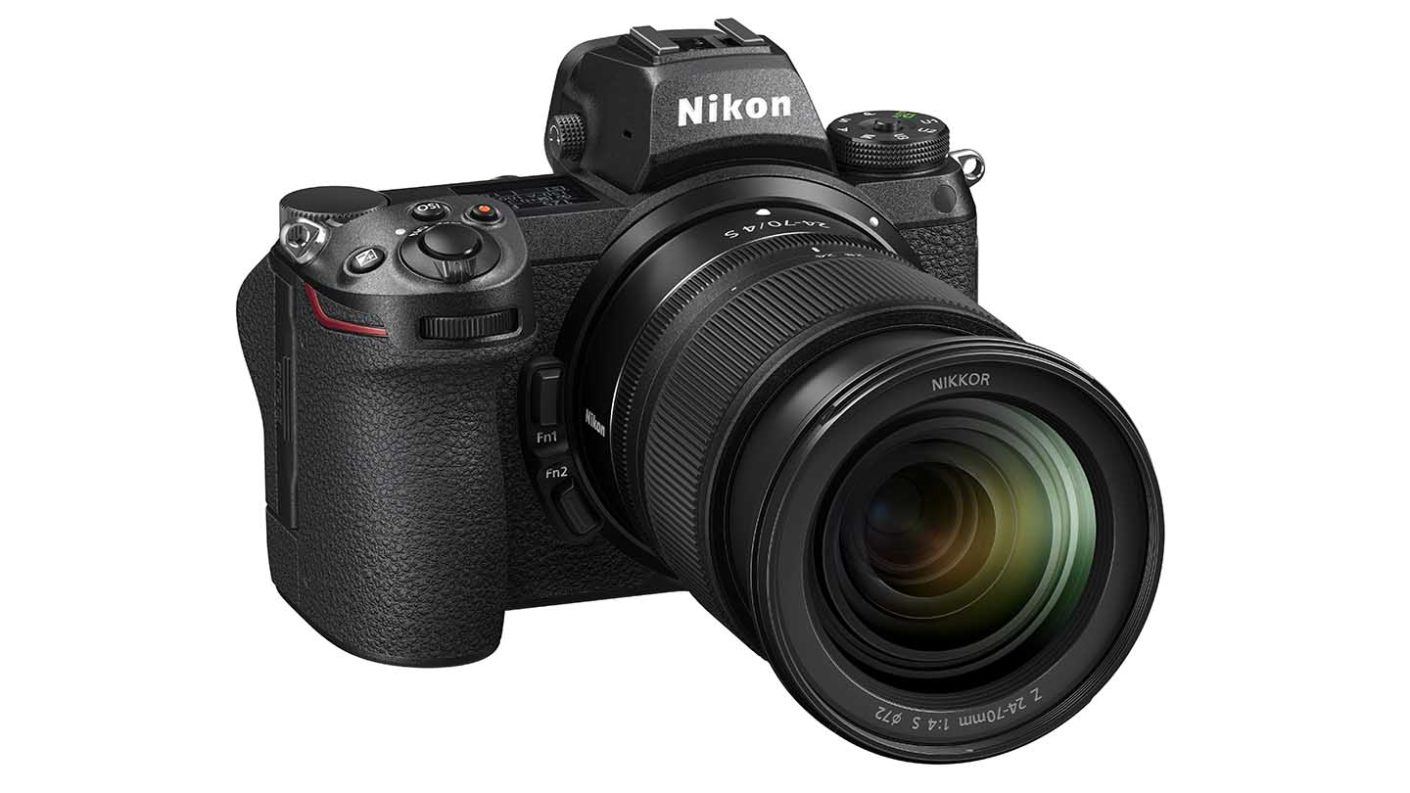
Specification
- Camera type: Full-frame mirrorless camera
- Announced: 14th October 2020
- Lens mount: Nikon Z
- Sensor: Full-frame (FX 35.9 x 23.9mm) 45.7MP backside illuminated (BSI) sensor
- Processing engine: Dual Expeed 6
- Stabilisation: 5-axis in-body VR
- Sensitivity: ISO 64-25,600, expandable to ISO 32-102,400
- Maximum continuous shooting rate: 10fps for up to 200Jpegs or 77 12-bit uncompressed raw files, 9fps with 14-bit raw files
- Autofocus system: Hybrid with phase and contrast detection
- Phase detection points: 493
- Video resolution: 4K (3840 x 2160) 60/50/30/25/24p, Full-HD (1920 x 1080) 120/100/60/50/30/25/24p, Slow-motion mode 1920 x 1080 30p x4/25p x4/24p
- Viewfinder: 0.5-inch 3.69-million-dot electronic viewfinder
- Screen: 3.2-inch 2,100,000-dot tilting touch-screen
- Storage: Dual slot 1 XQD/CFexpress and 1 SD/SDHC/SDXC
- Dimensions (W x H x D): 134 x 100.5 x 69.5mm / 5.3 x 4 x 2.8-inches
- Weight: 705g with battery and memory card but without body cap, 615g body only
While the 45.7Mp Nikon Z7 II has a lot in common with the excellent Nikon Z7 and uses much of the same technology (including the same sensor), the mark II camera has a second memory card slot which means it addresses the main concern that photographers had about the original camera. One slot accepts XQD or CFexpress cards while the other is for SD-type cards and is UHS-II compliant
Nikon also doubled the Z7 II’s processing power in comparison with the Z7 II by giving it two Expeed 6 processing engines. This enabled a boost in the continuous shooting rate from 9fps to 10fps and enables 4K shooting at 60P.
That extra processing power also enables Eye-detection AF for humans and animals in video mode as well as stills, and enhances the low-light capability of the autofocus system.
The Nikon Z7 II has the same build and handling as the Z7, Z6 and Z6 II, and it’s the best interface available in a Nikon camera to date.
You can find the latest deals on the Nikon Z7 II at Amazon UK and Amazon US.
£2999
€3442 / $2996.95For
- High-quality sensor
- Excellent user interface and control layout
- Weatherproof build
Nikon D850
Specification
- Camera type: Full-frame (FX) DSLR
- Announced: 24th August 2017
- Lens mount: Nikon F
- Sensor: 45.7Mp full-frame (35.9 x 23.9mm) backside-illuminated CMOS
- Maximum continuous shooting rate: 7fps as standard, 9fps with the optional MB-D18 Multi-Power Battery Pack for up to 51 14-bit lossless compressed raw files or 170 12-bit lossless compressed raw files
- Autofocus system: Viewfinder: Multi-CAM 20K autofocus sensor 153 focus points (including 99 cross-type sensors and 15 sensors that support f/8), of which 55 (35 cross-type sensors and 9 f/8 sensors) are available for selection, Live view: Contrast detection
- Viewfinder: Optical pentaprism type
- Screen: Tilting, touch-sensitive 3.2-inch TFT LCD with 2,359,000 dots
- Dimensions: 146×124×78.5mm / 5.8×4.9×3.1inches
- Weight: 1,005g / 2lb 3.5oz with battery and XQD memory card but without body cap, 915g /2lb 0.3oz camera body only
Possibly the most popular camera of 2017, the Nikon D850 is a great all-rounder which offers both enthusiasts and professionals a fantastic performance. The AF system was inherited from the then top-of-the-line D5, while the 45.7 million pixel sensor allows for some superb detail reproduction.
The optical viewfinder is the largest ever found on a Nikon DSLR, while the tilting touch-sensitive screen comes in useful for certain subjects. Silent shooting is enabled when you use Live View, which is great for discreet shots where you need to be quiet.
Although the D850 is not primarily aimed at sports and action photographers, it’s 7fps maximum shooting rate gives you something to work with – and you can boost that to an even more usable 9fps by adding an optional battery grip. While the Sony A9 may have the D850 beaten in some key areas (such as frame rate), for professionals working in the field, the D850’s battery life is so much more workable.
Overall the D850 is a fantastically versatile DSLR that produces high-quality images, while being more affordable than the professional-level D6.
Find the latest deals on the Nikon D850 at Amazon UK and Amazon US.
£3500
$3296.95Nikon Z6 II
Specification
- Camera type: Full-frame mirrorless camera
- Announced: 14th October 2020
- Lens mount: Nikon Z
- Sensor: Full-frame (FX 35.9 x 23.9mm) 24.5MP backside illuminated (BSI) sensor
- Processing engine: Dual Expeed 6
- Stabilisation: 5-axis in-body VR
- Sensitivity: ISO 100-51,200, expandable to ISO 50-204,800
- Maximum continuous shooting rate: 14fps for up to 200Jpegs or 124 12-bit uncompressed raw files
- Autofocus system: Hybrid with phase and contrast detection
- Phase detection points: 273
- Video resolution: 4K (3840 x 2160) 30/25/24p (60P to come with free firmware update in Feb 2021), Full-HD (1920 x 1080) 120/100/60/50/30/25/24p, Slow-motion mode 1920 x 1080 30p x4/25p x4/24p x5
- Viewfinder: 0.5-inch 3.69-million-dot electronic viewfinder
- Screen: 3.2-inch 2,100,000-dot tilting touch-screen
- Storage: Dual slot 1 XQD/CFexpress and 1 SD/SDHC/SDXC
- Dimensions (W x H x D): 134 x 100.5 x 69.5mm / 5.3 x 4 x 2.8-inches
- Weight: 705g with battery and memory card but without body cap, 615g body only
While it has the same 24.5Mp backside-illuminated full-frame sensor as the original Nikon Z6, the Nikon Z6 II has two Expeed 6 processing engines instead of one. Nikon also added an SD/SDHC/SDXC (UHS-II) card slot alongside the XQD/CFexpress card slot of the original camera to address one of the concerns that many photographers raised about the original camera.
Thanks to the extra processing power, the Z6 II has a maximum continuous shooting rate of 14fps, 2 fps higher than the Z6, with full autofocus and metering capability. That rate can be maintained for 200 Jpegs or 124 uncompressed 12-Bit raw files.
Like the Z6, the Z6 II has a native sensitivity range as the Z6, ISO 100-51,200 (expandable to ISO 64-204,800) and a 273-point hybrid focusing system that covers 90% of the sensor.
However, the tracking and low-light AF performance of the Z6 II has been improved and the newer camera can focus at -6EV with an f/2 or faster lens.
In addition, the Z6 II’s human and animal eye AF operates in video mode as well as in stills mode.
You can find the Nikon Z6 II on eBay, John Lewis & Partners, Wex Photographic and Amazon UK and Amazon US.
£1999
€2262For
- High-quality sensor
- Excellent user interface and control layout
- Weatherproof build

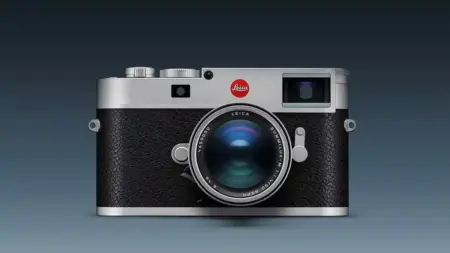
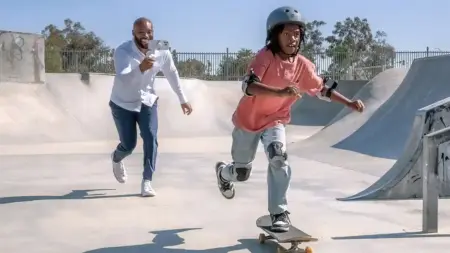
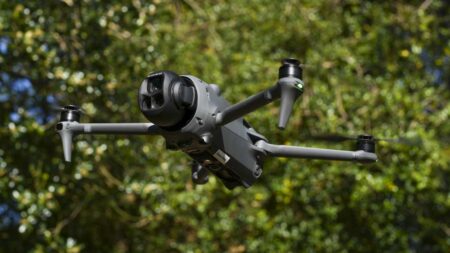
Leave a Reply